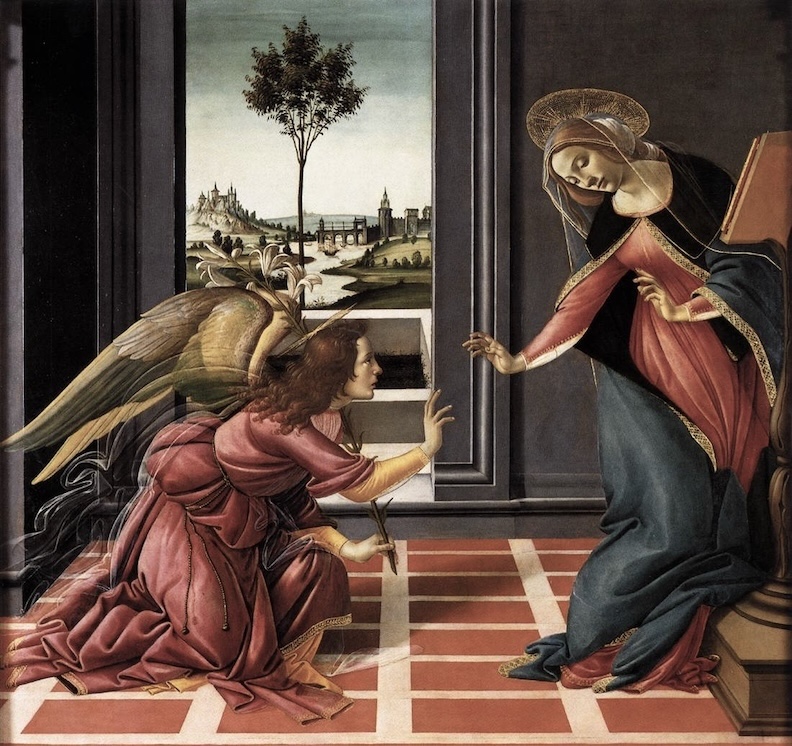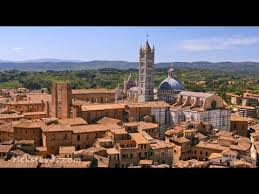The moon has people on the move.
The solar eclipse on Monday, 8 April 2024, is expected to draw millions to good viewing spots in the “path of totality,” stretching from Mazatlán to Montreal. Preemptive closures have been announced to deal with the logistical challenges.
The moon rarely blocks the sun entirely, but every year the lunar cycle determines the date of Easter, and much else depends on that. So the Feast of the Annunciation is also on the move this year, transferred from its usual spot on 25 March – which fell during Holy Week – to 8 April, the first day after Holy Week and the Easter Octave, to no longer impede it.
The coincidence of an eclipse with the Annunciation suggests that the meandering of the moon might be a matter for spiritual meditation. Mary is the woman with the moon at her feet and clothed with the sun. (Revelation 12:1)
The moon is an apt Christian symbol for the Blessed Mother, as the moon has no light of its own, but only reflects the light of the sun; Mary reflects the light of her Son upon the face of the earth. But the moon is not purely ancillary much less merely decorative; its gravitational pull keeps the earth in balance, as it were.
An intermediary between the sun and earth, the moon watches over the earth with its face turned always to the sun. The moon is not a star, like the sun, a fearsome source of light and warmth. It remains the more approachable light. It is not possible to look directly into the sun – face to face, as it were (Exodus 33:20) – much less to stand upon it. The moon can be contemplated easily, a friendly companion, a gentle reminder that the sun, though not seen, is working still and will return.
If the sun is the glory of the Lord coming before the Ancient of Days (Daniel 7:13), then the moon is the kindly light that guides us “o’er moor and fen, o’er crag and torrent/ till the night is gone.” The light of Newman’s poem is Christ, the light, but if it serves as a guide during the night, then it is the light reflected by the moon, rather than the direct light of the sun. The source of light is the same in either case.
An eclipse is a symbolic challenge. What to make of the moon when it obscures the sun, rather than reflects its light? Is that not the objection to Marian devotion, that it puts someone between us and the Son? Perhaps it even obscures the greater light with a lesser light, or that which is not even light at all? Does not the natural rarity of the eclipse teach us that the proper supernatural order of things is to prefer our sunlight directly? Why put so much stock in a moon which, for most of its cycle, only partially reflects the sun – and often enough – blocks it?

All such objections are good reminders that Mary is never to obscure Jesus, and the cult of the saints is not to diminish, but enhance, the worship of God. There exist pious souls who ignore the Blessed Sacrament in a church while pouring out their hearts before a statue of Our Lady or an image of the Little Flower or Padre Pio. God likely looks kindly on misguided piety, but it remains misguided.
The Annunciation gives a proper spiritual interpretation of a solar eclipse. For that singular moment in Nazareth, the moon determined whether the sunlight – the Son’s light – would reach the world. This is how St. Bernard of Clairvaux puts it in a sermon excerpted in the Divine Office for 20 December:
The angel awaits an answer; it is time for him to return to God who sent him. We too are waiting, O Lady. . . .The price of our salvation is offered to you. We shall be set free at once if you consent. In the eternal Word of God we all came to be, and behold, we die. In your brief response we are to be remade in order to be recalled to life. Tearful Adam with his sorrowing family begs this of you, O loving Virgin, in their exile from Paradise. Abraham begs it, David begs it. All the other holy patriarchs, your ancestors, ask it of you, as they dwell in the country of the shadow of death. This is what the whole earth waits for.
Just as celestial movements offer those rare moments when the reach of the sun’s light depends – fleetingly – on the moon, there was a singular moment in Nazareth. God sent his Son into the world, but dependent upon the free consent of the Virgin of Nazareth. To be sure, she was filled with grace and preserved from sin. Grace enhances freedom and sin erodes it; thus the sinless Mary, full of grace, was more free, not less. And the Incarnation depended upon her freedom, by God’s own choice. The light coming into the world (John 1:9) depended upon Mary to enter it. The sun depended, for that moment, upon the moon.
Analogies are not exact. Mary never eclipses Jesus. But one can imagine Abraham and David and the tearful children of Adam looking up and praying that the moon give permission for the sunlight to breakthrough again. The shadow of an eclipse is a memory of the beginning, when “darkness was upon the face of the deep.” (Genesis 1:2)
In the beginning God said fiat lux. And so it was.
Mary replies today, fiat mihi. And so He came to be among us.















